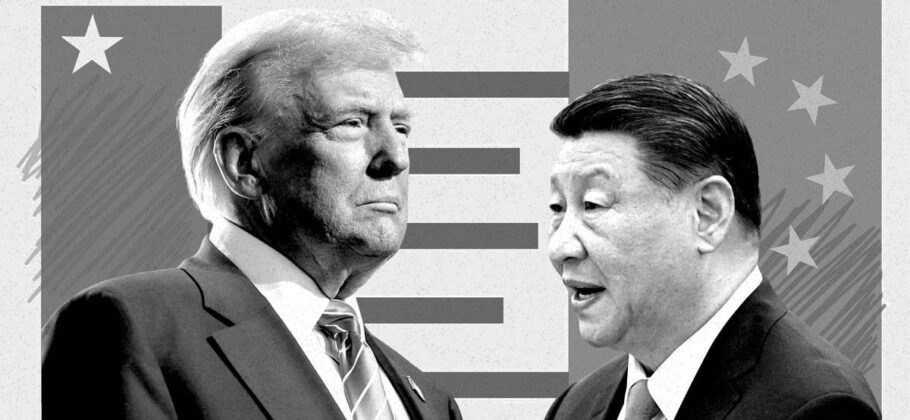President Donald Trump has promised that the United States will strike a trade agreement with China, despite the current breakdown in formal negotiations and the highest tariffs ever seen between the two economic giants. Speaking confidently from the White House, Trump told reporters, “We will have a deal with China. I think we’re going to make a very good deal.” His comments came just days after the administration raised tariffs on Chinese imports to a record 245 percent.
While there is no confirmed schedule for renewed negotiations, Trump’s remarks suggest that behind-the-scenes contact continues. “Yeah, we’re talking to China,” he said. “I would say they have reached out a number of times.” This statement aligns with China’s own confirmation that there is “working-level communication” between both sides, though no public progress has been made.
The Current State of U.S.–China Tariffs
Since early April, the Trump administration has imposed sweeping tariffs, applying a 10 percent baseline import tax on nearly all goods entering the United States and layering much higher tariffs on specific countries with large trade surpluses, especially China. Imports from China now face duties as high as 245 percent, a massive increase from previous rounds.
China has responded by placing its own retaliatory tariffs on U.S. goods, some as high as 125 percent. A spokesperson from the Chinese Commerce Ministry, He Yongqian, pushed back on U.S. expectations, stating, “The person who tied the bell must be the one to untie it,” using a Chinese proverb to suggest that since the U.S. started the conflict, it should be the one to resolve it.
Despite this tough rhetoric, He confirmed that there is still communication between the two governments. However, China has called for the U.S. to show greater respect, refrain from applying “extreme pressure,” and adopt a more consistent and diplomatic approach if it hopes to restart serious negotiations.
Economic Effects Across the Globe
The impact of the U.S.–China trade standoff has rippled across the global economy. Stock markets in the U.S., Asia, and Europe have experienced swings due to fears of inflation, reduced trade, and slow growth. The World Trade Organization issued a dire warning, estimating that global trade could drop by as much as 1.5 percent in 2025 if the current uncertainty continues. WTO Director-General Ngozi Okonjo-Iweala said, “The enduring uncertainty threatens to act as a brake on global growth, with severe negative consequences for the world.”
In the United States, consumer behavior shifted dramatically ahead of the tariff hikes. Retail sales surged in March as shoppers rushed to purchase goods before prices increased. In China, some exporters have already halted shipments to the U.S. “Basically, there are no freight companies willing to take orders because no one knows what will happen to the tariffs when the goods arrive,” said Zhang Haiyun, a trade director at a Chinese electronics company participating in the Canton Fair.
In Europe, central banks are lowering interest rates to counter the slowdown in trade. The European Central Bank recently cut rates to 2.25 percent, its sixth consecutive cut. President Christine Lagarde noted, “The net impact on inflation will only become clear over time… but we have a lot of uncertainties still today.”
Trump’s View: Tariffs Make the U.S. Stronger
Despite the chaos, Trump remains unwavering. He has repeatedly claimed that tariffs are benefiting the American economy. “No, tariffs are making us rich,” he said during a meeting with Italian Prime Minister Giorgia Meloni. “We were losing a lot of money under Biden. And now that whole tide is turned.” Trump further stated that other nations “want to make deals more than I do,” framing the United States as holding the upper hand due to its massive consumer market.
Trump’s strategy, called the “Fair and Reciprocal Plan,” aims to correct what he sees as decades of one-sided trade relationships. The plan includes a permanent 10 percent tariff on most imports and targeted hikes on countries with large trade imbalances. So far, 75 countries have opened talks with the U.S. to avoid tariffs, but China has not joined that list.
Supporters of Trump’s trade policy believe the pressure will lead to better outcomes for American workers and industries. Commerce Secretary Howard Lutnick said, “This is about ending decades of trade abuse. We’re finally putting America first.” Trump has said that the tariff money is being reinvested into the U.S. economy and used to support domestic manufacturing.
Others believe that Trump’s aggressive use of tariffs is a long-overdue response to China’s unfair practices. “Every nation, including China, wants to meet,” Trump stated, suggesting that the current strategy is forcing countries to the negotiating table.
Not everyone agrees with this approach. California Governor Gavin Newsom and Attorney General Rob Bonta filed a lawsuit against the Trump administration, claiming the tariffs are unconstitutional and economically damaging. “It’s the worst own-goal in the history of this country,” Newsom said. The lawsuit argues that Trump’s use of emergency economic powers to impose tariffs exceeds his legal authority and requires congressional approval.
Economists are also raising concerns. The IMF’s managing director, Kristalina Georgieva, acknowledged that trade tensions are already dragging on global growth. “Trade tensions will inevitably incur costs,” she said. Although she added that a full global recession is not expected, the uncertainty is already altering forecasts.
American business leaders are voicing similar worries. CEOs in sectors ranging from technology to retail have warned that tariffs are raising costs, disrupting supply chains, and could eventually lead to job losses. French luxury brand Hermès announced it will raise prices in the U.S. next month to offset the 10 percent tariff. “It will be a complementary price increase that we are currently finalizing,” said finance chief Eric Halgouet.
Although no formal negotiations have been scheduled, Trump maintains that a deal with China is “inevitable.” He continues to express optimism, stating, “We will make a very good deal with China.” Chinese officials, meanwhile, are insisting on mutual respect and a more balanced dialogue.
If no progress is made, the global economy could face deeper consequences. For now, both sides appear to be holding firm, each waiting for the other to make the next move. Whether Trump’s bold strategy results in a long-term agreement or a prolonged economic standoff remains to be seen.











